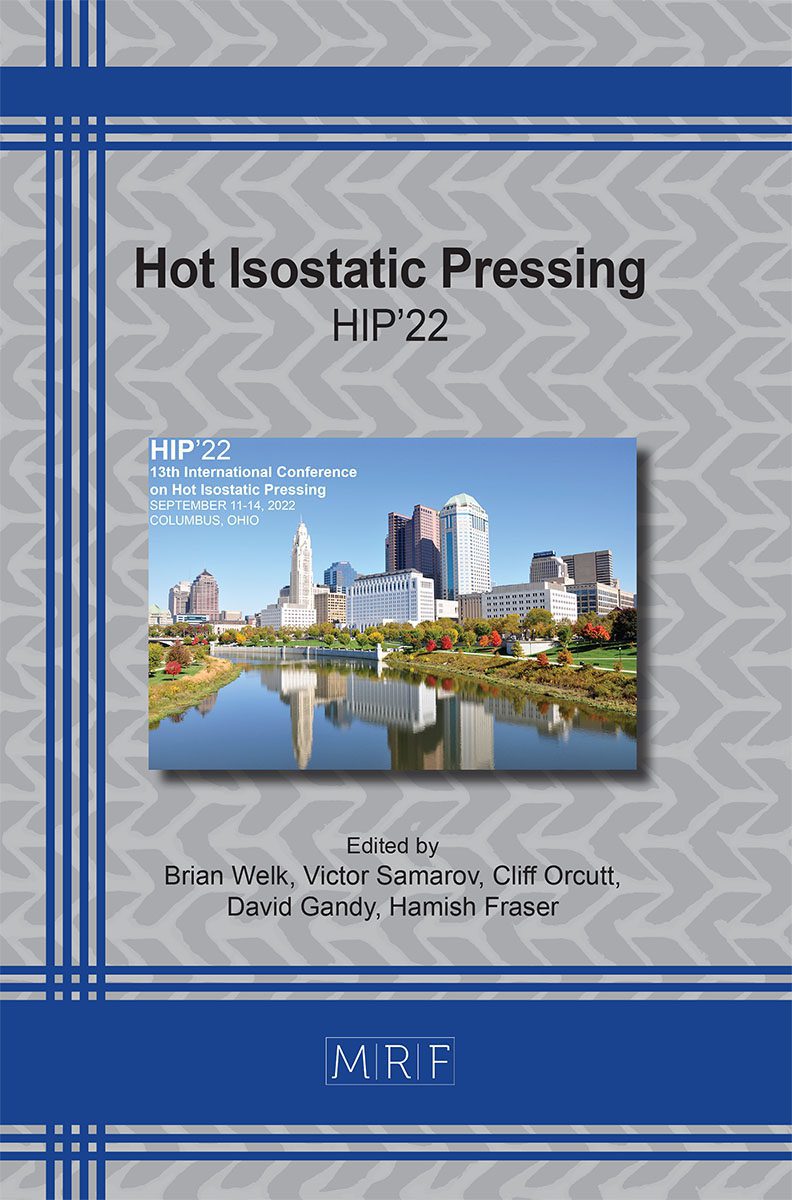Use of HIP Process in Post-Processing of Components Manufactured by SLM Technology from Magnetically Soft FeSi6.5 Powder
Dariusz Kołacz, Adrian Radoń, Karol Krukowski, Joanna Kulasa, Aleksandra Kolano-Burian
download PDFAbstract. This paper presents the influence of the Hot Isostatic Pressing (HIP) process on the structure and properties of the components printed by Selective Laser Melting (SLM) technology. The samples were manufactured from magnetically soft FeSi6.5 alloy powder, using different SLM printing parameters. Semi-finished products were densified in the HIP process by varying its duration and isostatic pressure value. Density, hardness, and microstructure were tested on the printed parts both before and after HIP densification. The application of the hot isostatic pressure densification process indicates a change in its final properties concerning the feedstock components. The influence of variable SLM printing parameters of semi-finished parts on the production quality and properties after the HIP process was also observed.
Keywords
HIP, Powder FeSi6.5, Magnetically Soft Material, Process of Post-Processing
Published online 12/8/2023, 6 pages
Copyright © 2023 by the author(s)
Published under license by Materials Research Forum LLC., Millersville PA, USA
Citation: Dariusz Kołacz, Adrian Radoń, Karol Krukowski, Joanna Kulasa, Aleksandra Kolano-Burian, Use of HIP Process in Post-Processing of Components Manufactured by SLM Technology from Magnetically Soft FeSi6.5 Powder, Materials Research Proceedings, Vol. 38, pp 61-66, 2023
DOI: https://doi.org/10.21741/9781644902837-10
The article was published as article 10 of the book Hot Isostatic Pressing
![]() Content from this work may be used under the terms of the Creative Commons Attribution 3.0 license. Any further distribution of this work must maintain attribution to the author(s) and the title of the work, journal citation and DOI.
Content from this work may be used under the terms of the Creative Commons Attribution 3.0 license. Any further distribution of this work must maintain attribution to the author(s) and the title of the work, journal citation and DOI.
References
[1] G. Stornelli, P. Folgarait, M. R. Ridolfi, D. Corapi, Ch. Repitsch, O. Di Pietro, A. Di Schino, Feasibility Study of Ferromagnetic Cores Fabrication by Additive Manufacturing Process, Mater. Proc., 3 28 (2021) https://doi.org/10.3390/IEC2M-09241
[2] D. Goll, D. Schuller, G. Martinek. T. Kunert, J. Schurr, C. Sinz, T. Schubert, T. Bernthaler, H. Riegel, G. Schneider, Additive manufacturing of soft materials and components, Addit. Manuf., 27 (2019) 428-439 https://doi.org/10.1016/j.addma.2019.02.021
[3] G. Stornelli, A. Faba, A. Di Schino, P. Folgarait, M. R. Ridolf, E. Cardelli. R. Montanari, Properties of Additively Manufactured Electric Steel Powder Cores Increased Si Content, Materials 14 1489 2021 https://doi.org/10.3390/ma14061489
[4] P. Jang, B. Lee, G Choi, Effects of annealing on the magnetic properties of Fe-6.5%Si alloy powder cores, J. Appl. Phys., 103 07E743 (2008) https://doi.org/10.1063/1.2839620
[5] D. Kołacz, K. Krukowski, A. Radoń, J. Kulasa, M. Maleta, B. Cwolek, A. Hury, Influence of the HIP process on the properties of elements obtained by additive manufacturing technologies and made in the casting process, Łukasiewicz-IMN Report, 8139 (2021), not-published.
[6] X. Shen, F. Meng, K. Boon Lau, Pei. Wang, Ch. H.T. Lee, Texture and microstructure characterizations of Fe-3.5wt%Si soft magnetic alloy fabricated via laser powder bed fusion, Mater. Character., 189 112012 (2022) https://doi.org/10.1016/j.matchar.2022.112012































